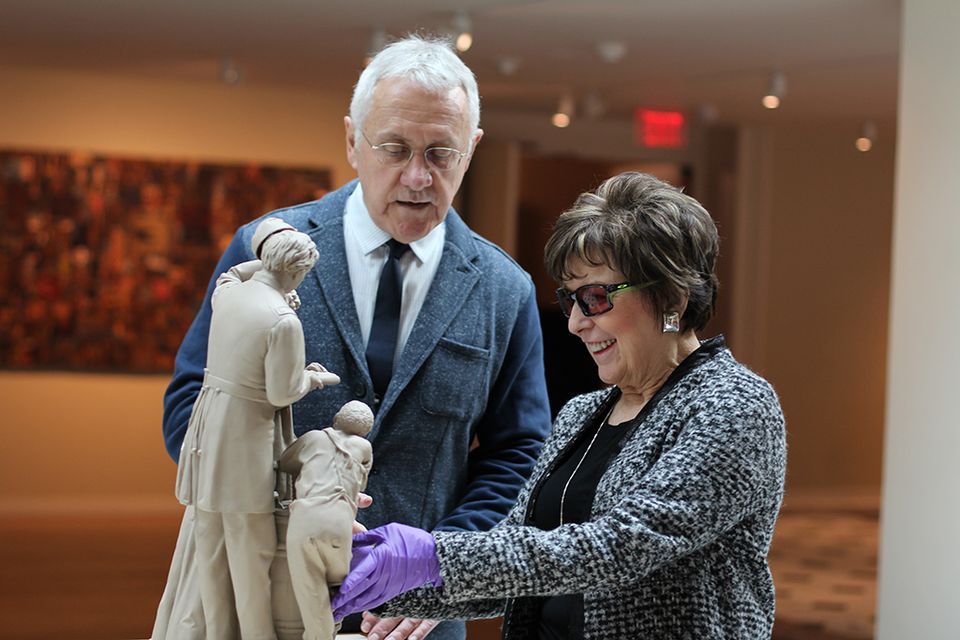

The best in-person encounters with artwork can engage us with compelling stories, challenge us with thought-provoking ideas, and inspire creativity. By looking deeply, visitors connect with art through what they see. But how does someone who is blind experience art in a museum? At SAAM, a team of volunteer docents have been specially trained to bring artwork to life for visitors who are blind.
America InSight tours offer a guided art museum experience for people who are blind or have low-vision. Currently offered twice each month, these tours combine verbal description techniques and sensory description with opportunities for touch, using tactile aids as well as selected sculptural objects.
David Weisz, a SAAM docent trained in these techniques, explained how he structures an America InSight tour. He starts in the museum's Kogod Courtyard, asking visitors to think about the sounds and smells of that space while describing its visual elements and sharing information about the building's history. He might then lead his group into the galleries, spending the rest of the hour-long tour with three or four artworks that he helps visitors access through a detailed verbal description, and one or two sculptural objects they can safely touch, wearing gloves.
Artworks are described in detail, painting as rich a picture as possible for visitors. Verbal description requires docents to use sensory and descriptive language to convey what visitors cannot see. Weisz explained how docents also describe the physical spaces of the museum in detail while moving through them, giving a visitor a sense of place. He also showed me an example of a tactile aid he often uses to help blind or partially-sighted visitors better understand a painter's stylistic choices: a small canvas sample with various paint textures they can feel.
Weisz emphasized the importance of offering choice to the visitors who attend his America InSight tours. When sighted people visit an art museum, he explained, they get to decide whether they want to read the label text before or after looking at an artwork, for instance. Something as simple as asking about an individual's preference for how and when to receive this kind of information can go a long way towards supporting choice and independence in the galleries. In addition, Weisz constantly checks in with his visitors, getting feedback so that he can adjust his style and presentation to meet their needs. The level of description can be adapted based on the level of sight a person has, their prior experience in museums, and their general knowledge of art.
So what's it like for a blind person to experience art? Recently SAAM docents conducted a tour for Kathy Nimmer, a national teacher of the year from Indiana, who is blind. "It was the first time that I felt connected with art in a similar way as my sighted colleagues," Nimmer said. "It was deeply moving."
In addition to the regularly scheduled America InSight tours, SAAM's Education staff can arrange visits for blind or low-vision groups or schools. The museum also offers Art Signs, a series of tours presented in American Sign Language (ASL) led by deaf gallery guides.


















